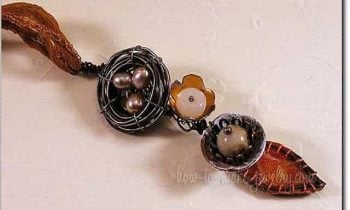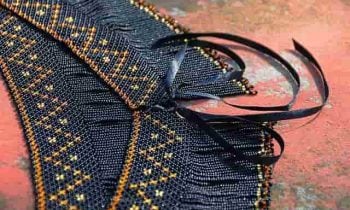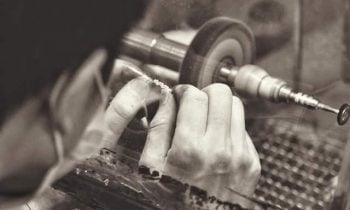Beading is one of the most popular niches in jewelry making and rightfully so. It takes a lot of skills and patience in order to make intricate and creative pieces from just a bunch of beads and string. If you’re thinking of pursuing this side of jewelry making, you should first master some basic stitches which will serve as building blocks to further your skills in the future.
Bead stitches are a variety of ways beads can be weaved into. Here are some of the basic and essential stitches in beading.
- Ladder stitch
Although the ladder stitch is not as prevalent in use as the other stitches, learning it will still pay off in the long run as this stitch provides the base for other more complicated stitches such as the brick and herringbone stitches. The ladder stitch is often used to join beads together to form a base row which is usually added to other bead stitches like the ones mentioned before. However, this stitch can also be used on its own to make beaded jewelry.
You can learn this stitch by watching online videos or reading online tutorials.
- Brick Stitch
The brick stitch, also called the comanche stitch, is another common yet fundamental bead stitch. The way the brick stitch looks is similar to the peyote stitch. The brick stitch has each row of beads offset one half bead from the bead of the row above it. The stitch resembles the way actual bricks are stacked together to make a wall, hence the stitch’s name.
- Peyote stitch
The peyote stitch is said to be found and used in various cultures around the world. Artifacts using the peyote stitch has been found in ancient Egyptian sites/. However, the name of the stitch comes from the Native American bead-weaving tradition which used the stitch to ornate the handles of gourds used in ceremonies.
- Square stitch
The square stitch is an off-loom beading technique that greatly resembles loom beadwork. However, the square stitch is believed to be even more durable than loom beadwork. The stitch is also useful for making smaller bead components.
Experts recommend learning this stitch prior to the more complicated loom beading as they are quite similar. The stitch has a grid-like look when finished.
- Right-angle stitch
The right angle stitch is a very versatile technique which allows for many possibilities for bracelets and necklaces. Using this technique, you can play with different colors and patterns along with different types of beads as well.
The technique’s finish is often described as open and airy. The right angle stitch creates square grids with spaces between the beads which gives the finished product a light and ‘lacy’ look as well. However, this stitch is also one of the more difficult techniques to master.
Here are the five basic and essential beadwork stitches that you’ll need to master if you want to get into the beading side of jewelry making. Keep on practicing making these and you’ll surely be advancing your skills and products in no time at all.

 Common jewelry making mistakes beginners make and how to avoid them
Common jewelry making mistakes beginners make and how to avoid them DIY Birthstone Jewelry
DIY Birthstone Jewelry 5 must learn basic beading stitches for beginners
5 must learn basic beading stitches for beginners 6 essential tools you’ll need as a jewelry-making beginner
6 essential tools you’ll need as a jewelry-making beginner